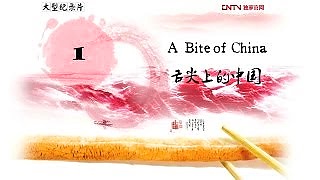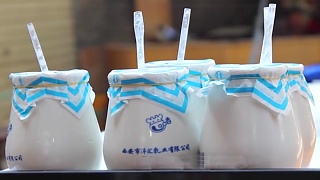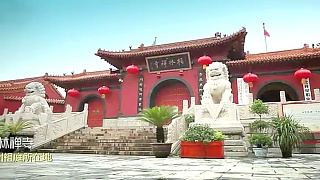Hot pot dining is a communal and interactive meal enjoyed by many in China and beyond.
A hot pot meal consists of a simmering broth into which fresh ingredients are cooked, then dipped into a sauce before eating, bit by bit. Meats are thinly sliced and can cook in just 20 seconds (be sure to cook only one slice at a time). One can have tomatoes or cucumber as a side dish to eat raw.
Typically, the dipping sauce is sesame sprinkled with chopped spring onions though one add add various condiments such as chopped garlic.
- Spicy (Hot) Broth (麻辣汤 - Má là tāng): This broth is typically made with a combination of chili peppers, Sichuan peppercorns, garlic, ginger, and various spices. It's known for its fiery and numbing flavor, characteristic of Sichuan cuisine. It adds a spicy kick to the ingredients cooked in the hot pot, offering a tingling sensation on the palate.
- Non-Spicy (Not Hot) Broth (清汤 - Qīng tāng): This broth is a milder option compared to the spicy broth. It's often made with a clear or lightly flavored base, such as chicken, pork, or vegetable broth. It allows the natural flavors of the ingredients to shine through without the overpowering heat of spices. It's a popular choice for those who prefer a more subtle and refreshing taste.
- Two-in-One (Yuan Yang) Broth (鸳鸯锅 - Yuān yāng guō): The two-in-one broth offers the best of both worlds by dividing the hot pot into two sections, allowing diners to enjoy both spicy and non-spicy options simultaneously. One side typically contains the spicy broth, while the other side contains the non-spicy broth. It caters to groups with varying preferences, providing a versatile dining experience where everyone can find something they enjoy.
- Meat:
- * Beef: Niú Ròu (牛肉)
- * Lamb: Yáng Ròu (羊肉)
- * Chicken: Jī Ròu (鸡肉)
- Pork: Zhū Ròu (猪肉)
- Sausages: Xiāng Cháng (香肠)
- * Fish / Shrimp/Prawn Balls: Yú Qiú / Xiā Qiú (鱼球 / 虾球)
- Seafood:
- - Shrimp: Xiā (虾)
- - Fish: Yú (鱼)
- - Shellfish: Háimǔ (海蜇)
- - Mussels: Gēn Mǔli (蚌肉)
- - Squid: Yóu Yú (鱿鱼)
- Vegetables:
- * Coriander: Xīng Cài (香菜)
- Potato slices: TǔDòu (土豆)
- Tomatoes: Fān Qié (番茄)
- Cucumber: HuángGuā (黄瓜)
- Bean Sprouts: Dà Suàn (大蒜)
- Lotus Root: Lián'ǒu (莲藕)
- Bamboo Shoots: Zhú Sǔn (竹笋)
- Cabbage: Xīng Cài (白菜)
- Spinach: Bō Cài (菠菜)
- Mushrooms:
- - * Enoki Mushroom (long thin white): Jīn Zhēngū (金针菇)
- - * Shiitake Mushroom: Xiāng Gū (香菇)
- - Oyster Mushroom: Mù Ěr (木耳)
- - Wood Ear Mushroom: Xīng'ěr (杏鲍菇)
- - King Oyster Mushroom: Xìng Bàogū (杏鲍菇)
- Tofu:
- * Iced Tofu: Dòng Dòufu (冻豆腐)
- * Tofu Skin: Dòu Pí (豆皮)
- Firm Tofu: Làn Dòufu (蓝豆腐)
- Silken Tofu: Dòufu Rǔ (豆腐乳)
- Bean Curd Sheets: Dòu Piàn (豆片)
- Noodles:
- * Clear (bean) Noodles: Tāng Fěn (汤粉)
- Rice Noodles: Mǐ Fěn (米粉)
- Udon Noodles: Wǔdūn Miàn (乌冬面)
- Other Ingredients:
- * Dumplings: JiǎoZi (饺子)
- Eggs: Jī Dàn (鸡蛋)
- Fried Dough Sticks: Yóu Tiáo (油条)
- Sauce Bowl:
- * Sesame Sauce: Zhī Málà Jiàng (芝麻麻辣酱)
- Peanut Sauce: Huā Shēng Jiàng (花生酱)
- Condiments one can add to sauce bowl:
- * Scallions (chopped spring onions): Cōng Jiàng Yóu (葱酱油)
- Soy Sauce: Jiàng Yóu (酱油)
- Vinegar: Cù (醋)
- Chili Sauce: Làjiāo Jiàng (辣椒酱)
- Garlic Sauce: Sào Jiàng (臊酱)
- Sesame Oil: Zhī Yóu (芝麻油)
Well known hot pot chains include XiaoBu XiaoBu and HaiDiLao but one can also enjoy many one-off independent restaurants.
Chinese cuisine is an intricate tapestry of flavors, techniques, and regional specialties that has evolved over thousands of years. From the fiery spices of Sichuan to the delicate dim sum of Cantonese cuisine, every region of China offers its own culinary delights. For visitors to China, exploring the diverse and dynamic world of Chinese food is an essential part of experiencing the country's rich cultural heritage. Here's a more extensive exploration of Chinese cuisine for visitors:
Regional Diversity:
Sichuan Cuisine: Hailing from the southwestern province of Sichuan, this cuisine is famed for its bold, spicy, and numbing flavors. Sichuan peppercorns, chili peppers, and aromatic spices are used liberally in dishes like Mapo Tofu, Dan Dan Noodles, and Sichuan Hot Pot, creating a symphony of flavors that tingles the taste buds.
Cantonese Cuisine: With its emphasis on fresh ingredients and delicate flavors, Cantonese cuisine is highly regarded for its seafood dishes, roasted meats, and dim sum. Steamed fish, Char Siu (barbecue pork), and Har Gow (shrimp dumplings) are just a few examples of the exquisite dishes that showcase Cantonese culinary mastery.
Shanghai Cuisine: Reflecting its coastal location and cosmopolitan history, Shanghai cuisine combines influences from Jiangsu, Zhejiang, and Anhui provinces. Sweet and Sour Mandarin Fish, Shanghai Soup Dumplings (Xiaolongbao), and Drunken Chicken are some of the signature dishes that highlight the diverse flavors and textures of this culinary tradition.
Beijing Cuisine: As the capital of China, Beijing boasts a rich culinary heritage deeply rooted in imperial traditions. Peking Duck, a dish with crispy skin and succulent meat served with pancakes and hoisin sauce, is a quintessential Beijing delicacy. Other notable dishes include Zhajiangmian (Beijing Noodles), Mongolian Hot Pot, and Beijing-style meat pies.
Hunan Cuisine: Known for its bold and aromatic flavors, Hunan cuisine features dishes that are spicy, sour, and intensely flavorful. Chairman Mao's Red-Braised Pork, Dong'an Chicken, and Steamed Fish Head with Chopped Chili exemplify the fiery and robust nature of Hunanese cooking, which makes ample use of chili peppers, garlic, and fermented ingredients.
Street Food and Snacks:
Jianbing: This savory Chinese crepe is a popular breakfast option, consisting of a thin pancake filled with eggs, scallions, cilantro, and various fillings such as crispy fried dough, pickled vegetables, or chili sauce.
Baozi: These steamed buns are filled with a variety of savory or sweet fillings, including pork, vegetables, or red bean paste. Baozi are a popular street food snack and can be found in teahouses, markets, and street stalls across China.
Roujiamo: Often referred to as Chinese Hamburgers, roujiamo features savory braised meat stuffed inside a flatbread, offering a hearty and flavorful snack that's perfect for on-the-go eating.
Dining Etiquette and Customs:
Family-Style Dining: Chinese meals are typically served family-style, with multiple dishes shared among diners seated around a table. It's customary to use chopsticks to pick up food from communal dishes and to serve elders before oneself.
Toasting and Ganbei: When dining with Chinese hosts, expect toasts (ganbei) with alcohol, usually baijiu (Chinese liquor). It's polite to reciprocate the toast and drink in moderation, but declining politely is acceptable if you don't drink alcohol.
Tea Culture: Tea is an integral part of Chinese dining culture, with a wide variety of teas available to complement different dishes. Green tea, oolong tea, and pu'er tea are among the most popular choices, and serving tea to guests is a sign of hospitality and respect.
Street Markets and Night Markets:
Wangfujing Snack Street, Beijing: Located near the Forbidden City, this bustling street market offers a wide variety of traditional snacks, street food, and local delicacies. Visitors can sample everything from scorpions on a stick to traditional Beijing snacks like Jianbing and Tanghulu (candied fruit skewers).
Shanghai Old Street, Shanghai: Nestled in the heart of the city's historic district, Shanghai Old Street is a bustling marketplace where visitors can explore narrow alleyways lined with traditional shops, street vendors, and food stalls. From steamed dumplings and stinky tofu to hand-pulled noodles and sugar-coated haws, there's something to satisfy every craving.
Dietary Considerations:
Vegetarian and Vegan Options: While Chinese cuisine traditionally features a wide range of meats and animal products, vegetarian and vegan options are becoming increasingly available, especially in larger cities and tourist destinations. Buddhist restaurants (????, s�sh� c?nt?ng) often offer meat-free versions of classic dishes, and plant-based ingredients like tofu, mushrooms, and seasonal vegetables are widely used in Chinese cooking.
Exploring the diverse and delicious world of Chinese cuisine is an essential part of any visit to China. From regional specialties and street food snacks to dining etiquette and cultural customs, the culinary landscape of China offers a rich tapestry of flavors, traditions, and experiences that are sure to delight and inspire visitors from around the world. Bon app�tit!.
 How to eat Hot Pot 火锅 HuǒGuō, plus ingredients – in both Chinese script and pinyin
How to eat Hot Pot 火锅 HuǒGuō, plus ingredients – in both Chinese script and pinyin




















